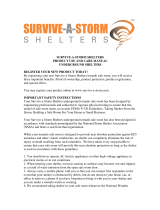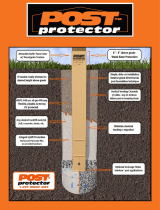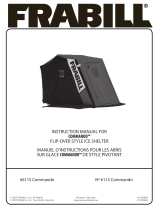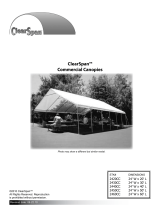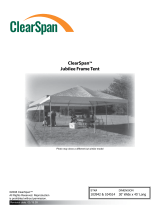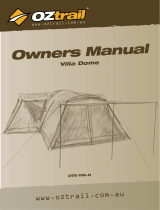
怰
ҡ
1/29/2021
What does NSSA offer you? To a shelter consumer, NSSA offers:
1. Identity of shelter producers who provide quality-verified products
2. Labels on quality-verified products to recognize quality
3. ICC/NSSA standard
1
that establishes quality criteria
4. Information and education via seminars, web pages, and responses to inquiries
5. Checklists of important elements of shelter quality
6. Advocacy for incentive programs for shelter construction
Is there FEMA funding available?
To determine if FEMA funding is available in your area, contact your local, county, or state emergency
management agency. Please keep in mind that all funding opportunities that we have been aware of
are not “paid up front” programs, but rebates. You must first purchase/install a shelter and have it
inspected. Then once all the paperwork required by your state (and local jurisdiction) has been
completed, you will receive a rebate. The amount varies by state, jurisdiction, and the amount of
funding available overall. Some states also require you to attend training sessions where you will learn
how to properly follow the process. This process can take months, and many states have deadlines to
get started. Again, check with your state’s emergency management agency for details.
After major tornado outbreaks, FEMA may release funding to cover a portion of the cost of a residential
Safe Room. To be eligible for a $2,000 rebate (under FEMA’s Project Impact, designed to help victims
rebuild after natural disasters), the product must be compliant with the requirements for a Safe Room
under FEMA P-361
2
and FEMA P-320
3
. Shelter manufacturers may or may not have this done, as it
can cost thousands of dollars, and it may even require extensive reworking of material or design
elements in the structure. The ESP Safety Shelter does qualify as a Safe Room under FEMA P-361
2
and is verified by the NSSA as being such.
FEMA criteria:
FEMA oversees and coordinates disaster relief, provides remediation funding after disasters, sets
recommended safety/design criteria for Safe Rooms, and studies the effects of natural disasters.
The FEMA criteria for storm shelters includes wind loads and debris impact. It is a goal that shelter
manufacturers should design for, but it is certainly more relevant for above-ground shelters than
underground shelters.
Keep in mind that there are always businesses that rush in after a disaster to take advantage of
victims. After Hurricane Andrew struck southern Florida, trucks crammed with jugs of tap water pulled
into town, charging exorbitant prices for something that was not considered valuable a day or two
earlier. After an ice storm struck Quebec, Canada in January 1998, one person bought a whole truck-
load of generators, then tried to peddle them to powerless Canadians at twice the price. There are also
companies that have products that can be “turned into” storm shelters. They have jumped into the
shelter business, adapting these products somewhat. So go by the old adage, “Let the buyer beware!”






